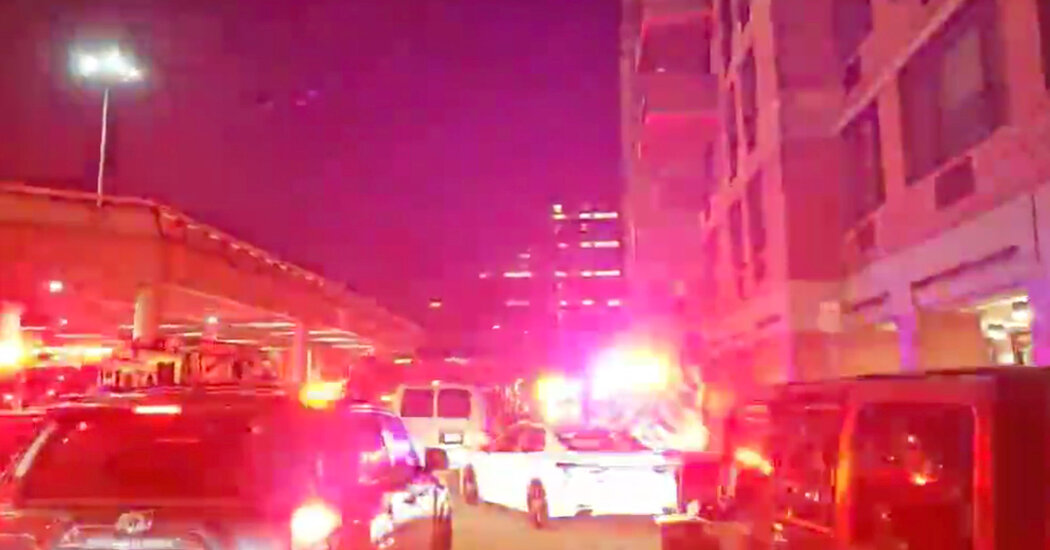
A Minor Earthquake Hit New York City. How Often Does That Happen?
When Renata De Oliveira and her husband were jolted awake by a loud thud that rattled the windows of their Roosevelt Island apartment early Tuesday morning, she thought her upstairs neighbor might have taken a bad fall, or that maybe there was a problem with her building’s heating system.
But the culprit, it turned out, was a small earthquake. Across Roosevelt Island and in other parts of New York City, people reported feeling their buildings shake or hearing loud noises at around 5:45 a.m., when the United States Geological Survey recorded a 1.7 magnitude earthquake in Astoria, Queens.
“I was very confused, because I was in such a deep sleep,” Ms. De Oliveira, 58, said. After calling her building’s front desk, Ms. De Oliveira said she went down to the lobby to try and learn more about what had happened. Numerous others had gathered in their pajamas as the Fire Department arrived and began investigating. After about 45 minutes, firefighters informed the crowd that the building was safe and they could return to their apartments.
No one was injured, according to the Fire Department, and there were no power outages or infrastructure damage reported, said Alfonso Quiroz, a spokesman for Con Edison. Though there were initial reports of an explosion on Roosevelt Island, which lies between Manhattan and Queens, those turned out to be unfounded.
New York City might not be known for its seismic activity, but in reality, the area experiences numerous tiny earthquakes every year, according to Thomas Pratt, a research geophysicist for the U.S. Geological Survey. Usually these tremors go undetected, he said.
Most people would not notice a 1.7 magnitude earthquake, Mr. Pratt said, but Tuesday’s event originated relatively close to the earth’s surface. Earthquakes usually begin anywhere from 2.5 to 12.5 miles underground, he explained, and the Queens quake originated from roughly three miles deep.
While most earthquakes in the Northeast go undetected, over the years New Yorkers have felt several earthquakes. A 2.2 magnitude earthquake rattled parts of New York and New Jersey in May of last year, and a 3.6 magnitude earthquake rocked the town of Adams Center the month before that. In 2011, a 5.8 magnitude earthquake in Virginia led to the evacuation of City Hall and Midtown office buildings in Manhattan.
The most significant tremors recorded in New York City occurred in 1884, Mr. Pratt said, when a 5.2 magnitude earthquake rumbled from beneath Coney Island.
While places like California that are notorious for frequent and more damaging earthquakes sit near the edges of tectonic plates — large pieces of the Earth’s surface that interact with each other and cause earthquakes or other geological events — New York City does not, said Mr. Pratt. But that wasn’t always the case, he said.
Hundreds of millions of years ago, the land that would eventually become New York was a place where continents crashed together and large earthquakes shook the earth below, Mr. Pratt said.
The fault lines that run through the Mid-Atlantic region became less active over time, but the earth beneath New York is still releasing stress from that time period, said John C. Mutter, a professor of earth and environmental studies at Columbia University.
“A lot of what you feel here, these little earthquakes, are a settling down of the stresses from way back then,” he said. The contractions from what was a very active plate boundary very long ago doesn’t just shut off, he added. “It takes a while for things to settle.”
It’s extremely unlikely that the city would experience a large earthquake that would cause significant structural damage, Mr. Mutter said, but New Yorkers should still be aware of how to respond in the event of an earthquake.
“The problem with New York City buildings — and you see it all the time with scaffolding structures — is the facades are often sort of fragile,” Mr. Mutter said, explaining that neither the people who build New York City buildings nor the people who live in them typically plan for earthquakes. “If you got a halfway decent earthquake, what you’d see in New York is air-conditioners falling out of windows, or flower boxes, or ornate facades.”
But more often than not, Mr. Mutter said, even noticeable earthquakes cause no real damage in New York City. The ground might shake a little, he said, or a book might fall off a shelf.
Even sewer lines, water mains and other underground infrastructure are unlikely to be affected by an earthquake, both Mr. Mutter and Mr. Pratt said. There might be some damage in the extremely improbable event of a more sizable 4 or 4.5 magnitude earthquake, Mr. Pratt said, or if the infrastructure was already damaged.
“Maybe if a sewer pipe or something like that was already very weak, but that would be unusual,” Mr. Pratt said, “People are more likely to hear a noise or feel the house shake. People often report it sounds like a sonic boom or an explosion going off.”




